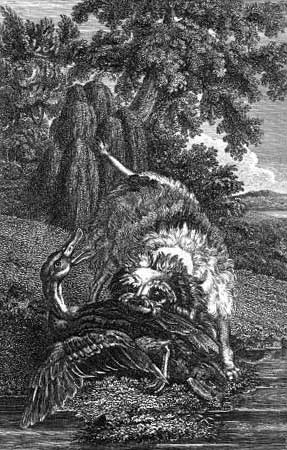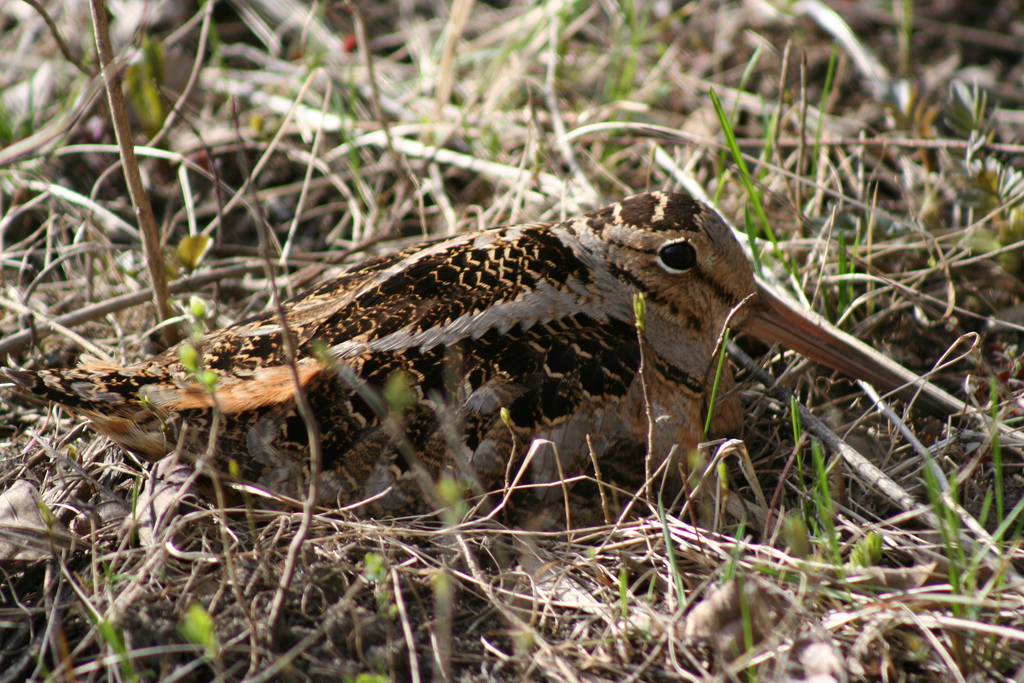|
French Spaniel
The French Spaniel (Epagneul Français) is a dog breed, breed of dog of the Spaniel-like setter. It was developed in France and Canada as a hunting dog, descended from dogs of the 14th century. Popular with royalty during the Middle Ages, it nearly became extinct by the turn of the 20th century but was saved by the efforts of Father Fournier, a French priest. One of the largest breeds of Spaniel, it typically has a white coat with brown markings. It is a friendly breed that has few health issues, but can be affected by a syndrome called acral mutilation and analgesia. The breed is recognised by Canadian and international kennel clubs but not by The Kennel Club (UK). The American Kennel Club has included the breed in its Foundation Stock Service, the first step to full recognition. History Spaniels were first mentioned in France during the 14th century in Gaston III of Foix-Béarn's work ''Livre de chasse'', later translated into English as ''The Master of Game''. The French Sp ... [...More Info...] [...Related Items...] OR: [Wikipedia] [Google] [Baidu] |
Société Centrale Canine
The Société centrale canine ( en, Central Canine Society), officially the Société Centrale Canine pour l'Amélioration des Races de Chiens en France and abbreviated SCC, is a French kennel club founded in 1881. It is made up of regional clubs and breed clubs, and coordinates and regulates activities and connections between governmental groups and dog clubs, as well as activities through the Fédération cynologique internationale, where it was one of the original five founding member organizations in 1911. History The SCC was founded in 1881, to sponsor dog shows in France as The Kennel Club was doing in England. In 1885, the Book of French Origin (''Livre des origines français'', L.O.F.) for the preservation of native dog breeds was begun through the SCC. In 1957, the French Ministry of Agriculture recognised the L.O.F. with other animal records, and it became the official French listing for purebred dogs. Today, all purebred dogs are listed in this register, subject to che ... [...More Info...] [...Related Items...] OR: [Wikipedia] [Google] [Baidu] |
Brittany (dog)
The Brittany is a breed of gun dog bred primarily for bird hunting. Although it is often referred to as the Brittany Spaniel, they are not actually spaniels. The AKC reclassified them in 1984 as just Brittanys, since they are pointing dogs and have less genetically in common with Spaniels, and more in common with Setters, which are pointing dogs. The breed's working characteristics are more akin to those of a pointer or setter than a spaniel. Brittanys were developed in Brittany, a province in northwest France, between the 17th and 19th centuries, becoming officially recognized early in the 20th. There are French Brittanys as well as American Brittanys. French Brittanys are used for upland birds and rabbits, whereas the American Brittanys are used for upland birds hunting exclusively. History The name "Brittany" is taken from the Brittany region in northwestern France where the dog originated. Images of orange and white Brittany-like dogs hunting and retrieving game were first ... [...More Info...] [...Related Items...] OR: [Wikipedia] [Google] [Baidu] |
Conformation Show
A dog show is an event where dogs are exhibited. A conformation show, also referred to as a ''breed show'', is a kind of dog show in which a judge, familiar with a specific dog breed, evaluates individual purebred dogs for how well the dogs ''conform'' to the established breed type for their breed, as described in a breed's individual breed standard. Such shows are useful to breeders as a means of evaluating dogs for breeding purposes. A conformation championship from a recognised national kennel club is generally considered a reasonably objective indication of merit, as it indicates that the dog has been found to be a superior example of its breed by a number of different judges on a number of separate occasions. Many breeders consider championship a prerequisite for breeding. Conformation shows have been controversial, as critics argue that the shows encourage selective breeding of traits and lower genetic diversity, which reduces the health, happiness and longevity of the do ... [...More Info...] [...Related Items...] OR: [Wikipedia] [Google] [Baidu] |
North American Versatile Hunting Dog Association
The North American Versatile Hunting Dog Association (NAVHDA) is one of the oldest, largest, and most successful dog training and testing organizations in North America.GUN DOG Spotlight: The North American Versatile Hunting Dog Association continues to grow in membership and popularity (July 2020) Accessed June 8, 2021. Founded in 1969, the organization was started in Goodwood, , Canada by a group of pudelpointer and [...More Info...] [...Related Items...] OR: [Wikipedia] [Google] [Baidu] |
American Kennel Club
The American Kennel Club (AKC) is a registry of purebred dog pedigrees in the United States. In addition to maintaining its pedigree registry, this kennel club also promotes and sanctions events for purebred dogs, including the Westminster Kennel Club Dog Show, an annual event which predates the official forming of the AKC, the National Dog Show and the AKC National Championship. The AKC is a non-member partner with the Fédération Cynologique Internationale. The AKC recognizes 200 dog breeds, as of 2022. History In the early 1800s, the English became concerned with the beauty of dogs as well as their function. This fad spread to North America, and in 1877, the Westminster Kennel Club Dog Show began. Soon after, the need for a regulating body became obvious. The National American Kennel Club, which had been founded in 1876, began to publish and make publicly available its studbook in 1879. This organization, however, had a more vested interest in field trials than in conformat ... [...More Info...] [...Related Items...] OR: [Wikipedia] [Google] [Baidu] |
United Kennel Club
The United Kennel Club (UKC) is a kennel club founded in 1898 in the United States. In contrast with the American Kennel Club, which is non-profit and which only clubs can join, the United Kennel Club is a profit-making corporation, open to individuals. History UKC was founded by Chauncey Z. Bennett, on February 10, 1898, after feeling that other dog registries in existence at the time catered too much to Conformation-only show dog owners or wealthy hobbyists, whom he called “the big city idle rich.”''UKC Centennial Book, The First 100 Years'', copyright 1997, UKC Bennett’s goal for UKC was to be a registry that recognized a wide range of breeds, as opposed to some of the working dog registries, which only recognized a handful of breeds. He envisioned UKC-registered dogs occupying a wide range of uses, from working, to companionship, to hunting. Bennett found a niche among the owners of working dogs, such as herding and hunting dogs. The first dog registered with UKC was a ... [...More Info...] [...Related Items...] OR: [Wikipedia] [Google] [Baidu] |
Fédération Cynologique Internationale
The Fédération cynologique internationale (FCI) (English: International Canine Federation) is the largest international federation of national kennel clubs. It is based in Thuin, Belgium. History The FCI was founded in 1911 under the auspices of the kennel clubs of Austria, Belgium, France, Germany and the Netherlands, its objective was to bring global uniformity to the breeding, exhibiting and judging of pure-bred dogs. It was disbanded in World War I and recreated in 1921 by Belgium and France. Since its foundation the FCI's membership has grown to include kennel clubs from across Europe as well as Africa, the Americas, Asia and Oceania. The official purebred registries in North America that are not members or contract partners of FCI include the American Kennel Club (AKC), Canadian Kennel Club (CKC) and United Kennel Club (UKC), and in Europe, The Kennel Club (TKC). According to AKC's Denise Flaim, crafting a workable standard is a challenge, and the "FCI standards typical ... [...More Info...] [...Related Items...] OR: [Wikipedia] [Google] [Baidu] |
Canadian Kennel Club
The Canadian Kennel Club (or CKC), founded in 1888 and chartered under the Animal Purebred Act, is one of the national kennel clubs of Canada. It maintains breed registries services for those purebred dogs approved for its control by Agriculture and Agri-Food Canada, and provides governance for all CKC-approved dog conformation shows, dog trials and canine events. The CKC is a non-member partner with the Fédération Cynologique Internationale. See also *List of kennel clubs A kennel club (known as a kennel council or canine council in some countries) is an organization for canine affairs that concerns itself with the breeding, showing and promotion of more than one breed of dog. All-encompassing kennel clubs are a ... References External links * Kennel clubs Animal charities based in Canada {{Dog-stub ... [...More Info...] [...Related Items...] OR: [Wikipedia] [Google] [Baidu] |
Grouse
Grouse are a group of birds from the order Galliformes, in the family Phasianidae. Grouse are presently assigned to the tribe Tetraonini (formerly the subfamily Tetraoninae and the family Tetraonidae), a classification supported by mitochondrial DNA sequence studies, and applied by the American Ornithologists' Union, ITIS, International Ornithological Congress, and others. Grouse inhabit temperate and subarctic regions of the Northern Hemisphere, from pine forests to moorland and mountainside, from 83°N (rock ptarmigan in northern Greenland) to 28°N (Attwater's prairie chicken in Texas). Turkeys are closely related to grouse and are also classified in the tribe Tetraonini. The koklass pheasant is also closely allied with them. Description Grouse are heavily built like other Galliformes, such as chickens. They range in length from , and in weight from . Males are larger than females—twice as heavy in the western capercaillie, the largest member of the family. Grouse ha ... [...More Info...] [...Related Items...] OR: [Wikipedia] [Google] [Baidu] |
Woodcock
The woodcocks are a group of seven or eight very similar living species of wading birds in the genus ''Scolopax''. The genus name is Latin for a snipe or woodcock, and until around 1800 was used to refer to a variety of waders. The English name its first recorded in about 1050. According to the Harleian Miscellany, a group of woodcocks is called a "fall". Taxonomy The genus ''Scolopax'' was introduced in 1758 by the Swedish naturalist Carl Linnaeus in the tenth edition of his ''Systema Naturae''. The genus name is Latin for a snipe or woodcock. The type species is the Eurasian woodcock (''Scolopax rusticola''). Only two woodcocks are widespread, the others being localized island endemics. Most are found in the Northern Hemisphere but a few range into the Greater Sundas, Wallacea and New Guinea. Their closest relatives are the typical snipes of the genus ''Gallinago''. As with many other sandpiper genera, the lineages that led to ''Gallinago'' and ''Scolopax'' likely diverged ... [...More Info...] [...Related Items...] OR: [Wikipedia] [Google] [Baidu] |
Quebec
Quebec ( ; )According to the Canadian government, ''Québec'' (with the acute accent) is the official name in Canadian French and ''Quebec'' (without the accent) is the province's official name in Canadian English is one of the thirteen provinces and territories of Canada. It is the largest province by area and the second-largest by population. Much of the population lives in urban areas along the St. Lawrence River, between the most populous city, Montreal, and the provincial capital, Quebec City. Quebec is the home of the Québécois nation. Located in Central Canada, the province shares land borders with Ontario to the west, Newfoundland and Labrador to the northeast, New Brunswick to the southeast, and a coastal border with Nunavut; in the south it borders Maine, New Hampshire, Vermont, and New York in the United States. Between 1534 and 1763, Quebec was called ''Canada'' and was the most developed colony in New France. Following the Seven Years' War, Quebec b ... [...More Info...] [...Related Items...] OR: [Wikipedia] [Google] [Baidu] |







